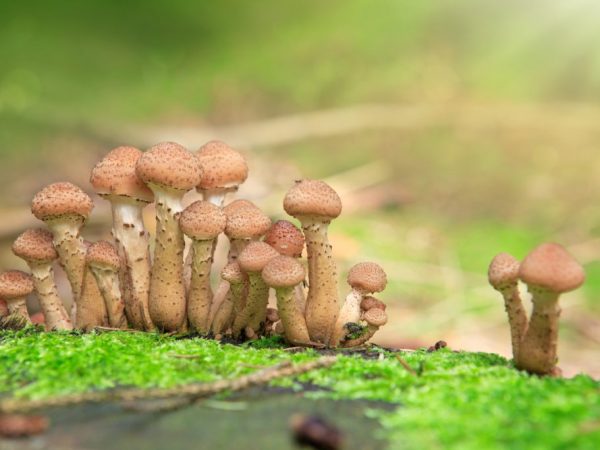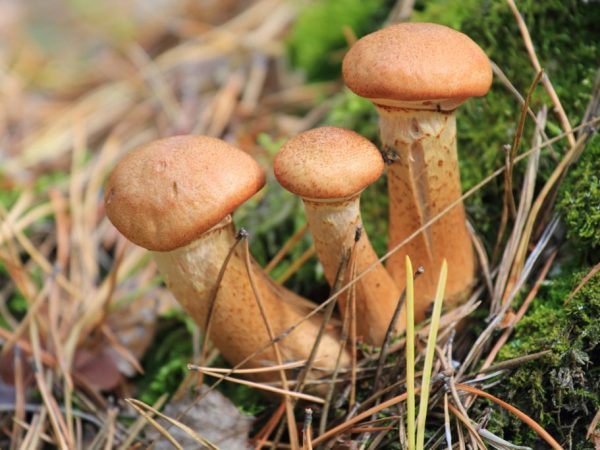When the honey agaric gathering begins
Gathering honey agaric brings great pleasure to any mushroom picker, because these mushrooms grow in colonies, which greatly facilitates the procedure for collecting forest gifts.

When the honey agaric gathering begins
Where to look for honey mushrooms
Along with the arrival of the wet season, while maintaining warm weather, the mushroom grows in the forest at an accelerated rate. A common time to start collecting mushrooms is early autumn. Honey mushrooms grow in deciduous forests and mixed forests. Their favorite place is tree trunks and hemp, fallen tree branches, where mushrooms live in large families. In rare cases, there are single specimens.
Sometimes mushroom spots with honey agarics are found under the bark of affected dead plants and even on the petioles of fallen leaves. Spring meadow grows among the grass, therefore clearings with mushrooms are easy to find in meadows and pastures, in fields and on forest edges.
The greatest harvests of honey agarics are collected by the inhabitants of the Northern Hemisphere, where the main places of their growth are located.
For the Physalacria family, the best places for development are damp forest strips, in particular they like to grow on trees and stumps located along the edges of ravines. They often appear in places where trees were cut down, populating the hemp remaining after them. The growth of mushrooms differs in some rules:
- for the 2-3rd year after cutting, honey agaric grows on birch, alder, aspen stumps;
- only 8-9 years after felling begins to grow on oak and pine.
It is believed that in order to find a large harvest of honey agarics, one should go to the forest, which is more than 30 years old. In such a forest, over this period of time, enough rotten stumps and trunks of dead trees have accumulated, protruding from under the soil of tree roots and dead wood, on which these mushrooms like to settle.
How to distinguish real mushrooms
Edible species have poisonous counterparts in nature. During the collection process, the following points must be taken into account:
- edible mushrooms do not grow on the ground surface (with the exception of meadow mushrooms), they grow on wood, branches or leaf stalks;
- mushroom caps of inedible false mushrooms are much more contrasting in color, have bright colors: from red to green and gray, the color of mushroom hymenophore plates is noticeably darker;
- the main sign of edibility is considered to be the presence of a leathery ring located directly under the mushroom cap on a leg; instead of a ring, false twins have only subtle scraps or the leg is generally naked;
- the mushroom cap and leg of the real honey fungus are covered with scales, while the false one does not;
- the edible honey fungus has a pleasant mushroom smell, the false one has an earthy one.
When honey mushrooms are harvested

There can be three layers of honey agarics per season.
The harvest season begins in the last days of August and covers the entire first winter month, but the mass fruiting of mushrooms occurs in mid-September, especially if the air temperature does not drop below + 10 ... + 15 ° С.
In many regions, honey fungus appears in 2-3 layers, the duration of each is 15-20 days.
Depending on the weather, the yield of honey agarics in favorable periods reaches 265-400 kg per 1 ha of forest area, and in the dry season - up to 100 kg / ha.
For different types of honey agarics, the collection takes place at different times:
- autumn: begin to be harvested from August and continue until November;
- winter: bear fruit all autumn and capture winter with the first frosts until December, however, some winter species in warm climatic regions begin to bear fruit in October and are under snow until March, but their growth stops when the temperature drops below 0 ° C;
- spring: meadows appear already in March-May, extending the fruiting season to June-July;
- summer: their fruiting period lasts from mid-August to late October.
Irina Selyutina (Biologist):
About honey mushrooms, we can say that these are permanent mushrooms. What else? And everything is quite simple: they do not "run over" from one place to another, and over the course of a number of years they will appear in the same place. If you once found a family of these mushrooms on a hemp or a fallen tree, rest assured that next year there is a 100% chance you will find them there again. And this will continue until the stump or trunk of the tree turns into dust. By the way. Sometimes it seems that mushrooms grow on the soil (do not confuse representatives of the Fizalacriaceae family with meadow mushrooms-saprophytes), but in fact they only bring their fruiting bodies to the soil surface, and the mycelium grows on underground roots extending from the stumps.
The most suitable time of day for harvesting honey agaric is considered early morning, when the mushrooms after the night coolness retained a fresh look, and after harvesting, in this case, they will retain their resistance to transportation and are stored longer.
How to collect honey mushrooms correctly
In the process of collecting honey mushrooms, it is recommended to adhere to methods that allow you to save the mycelium from mechanical damage. This will provide an opportunity to return to this place next year. The mushrooms are not pulled out so as not to damage the mycelium, but are cut off with a sharp knife or removed from the mycelium by twisting, turning around the axis.
The plucked mushroom, cleared of soil and debris, is placed in a basket or a bucket with the head down or on its side.
Among the entire family, only young specimens are chosen, leaving overgrown, accumulated toxins in themselves for a long time. To spread the spores of overgrown and rotten mushrooms, they are hung on branches by their caps.
Conclusion
There are many varieties of honey agarics, therefore they are harvested not only in the summer-autumn period. The first spring ones appear already in the first month of spring, meadows grow throughout June and capture July, from the end of August the season for autumn begins, from the end of autumn to the first frost they harvest winter crops. During the collection process, it is important to be able to distinguish between edible and false species.



